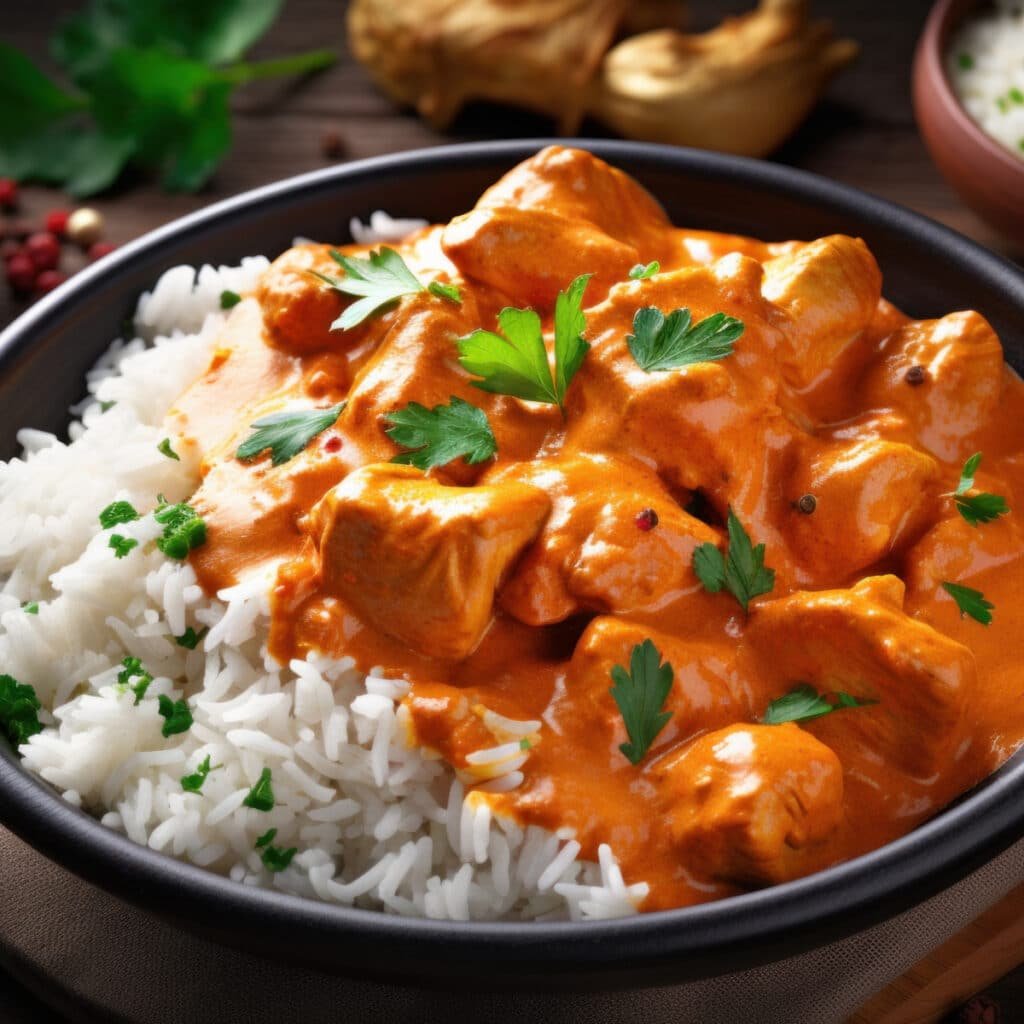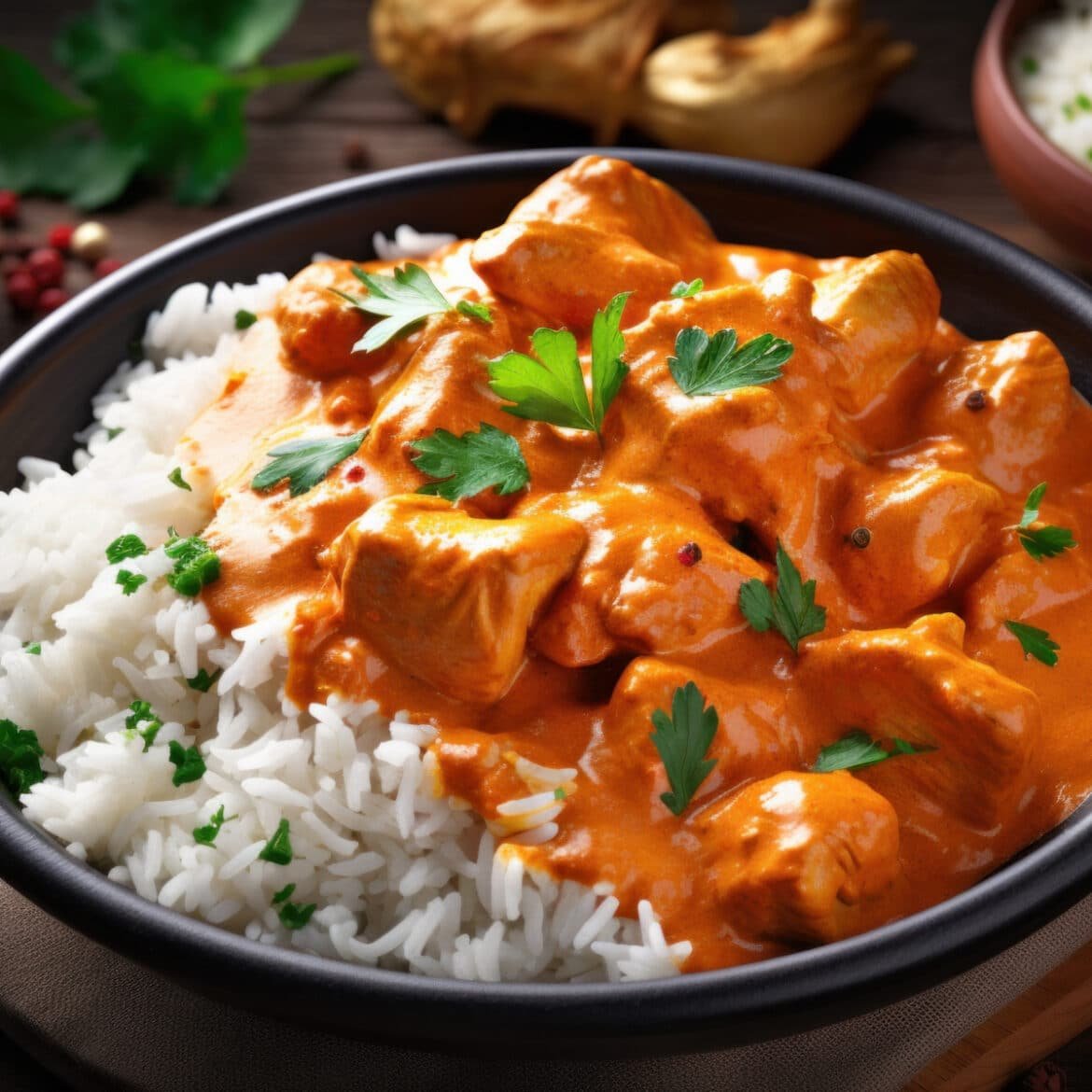Savor the rich flavors of our Pork Curry Recipe. A tantalizing fusion of spices and succulent pork. Spice up your dinner tonight! 🍛🐖
What part of the pork is best for curry?
When it comes to crafting a rich and flavorful pork curry, choosing the right cut of meat is crucial. Pork offers a succulent and tender base for curry dishes, and selecting the perfect cut can make all the difference. Here are a few options to consider:
- Pork Shoulder (Pork Butt): This is arguably the king of pork cuts for curry. It’s well-marbled, juicy, and packed with flavor. The fat in the shoulder slowly melts as it cooks, infusing the curry with a luscious, melt-in-your-mouth quality. Cube it into bite-sized pieces, and you’re in for a treat.
- Pork Belly: If you’re a fan of rich, indulgent curries, then pork belly is your go-to choice. It’s fatty, tender, and becomes beautifully caramelized during the cooking process. While it’s not the leanest option, its unctuousness adds a luxurious quality to your curry.
- Pork Loin: If you prefer a leaner option, pork loin can be a great choice. It’s tender and mild in flavor, making it ideal for those who want the spices and seasonings in the curry to shine. Be sure not to overcook it, as it can become dry.
- Pork Tenderloin: If you’re health-conscious but still craving a flavorful pork curry, consider pork tenderloin. It’s the leanest cut, so it won’t be as juicy as the shoulder or belly, but it’s tender and absorbs flavors beautifully.
- Ground Pork: If you’re in a hurry or prefer a ground meat curry, then ground pork is an excellent option. It cooks quickly and evenly, ensuring that every bite is packed with the deliciousness of your curry’s spices and aromatics.
How to make pork soft?
- Choose the Right Cut:
Selecting the right cut of pork is crucial. Cuts with a bit more fat and connective tissue tend to become the most tender when cooked slowly. Pork shoulder, pork butt, and pork belly are fantastic choices for achieving that desired tenderness. - Marinate:
Marinating your pork is like a flavor infusion and tenderization process in one. Create a marinade using a blend of ingredients like citrus juice, vinegar, soy sauce, olive oil, garlic, ginger, and your favorite herbs and spices. Let the pork soak in this flavorful bath for at least 30 minutes, but overnight marinating works wonders. - Slow and Low Cooking:
Slow cooking is the secret to achieving tender pork. Whether you’re roasting, braising, or stewing, low heat over a longer period allows the collagen in the meat to break down, resulting in tender, juicy pork. Consider using a slow cooker, pressure cooker, or a low oven temperature, depending on your recipe. - Braising:
Braising is a fantastic technique to make pork tender and infuse it with flavor. After searing your pork in a hot pan, add liquid (such as broth or wine) and simmer it on low heat, covered, until the meat becomes fork-tender. The slow simmering helps tenderize even tough cuts. - Use a Meat Thermometer:
Overcooking pork is a common mistake that leads to dry, tough meat. Invest in a meat thermometer to ensure your pork reaches the ideal internal temperature. For most cuts, you’re looking for about 145°F (63°C) for medium-rare, and up to 160°F (71°C) for well-done. - Rest the Meat:
Allow your pork to rest after cooking. This step is often overlooked but is essential. Resting for a few minutes lets the juices redistribute throughout the meat, making it more tender and flavorful. - Slice Against the Grain:
When it’s time to serve, be sure to slice your pork against the grain. This means cutting perpendicular to the muscle fibers. This technique shortens the muscle fibers, making the meat easier to chew. - Add Some Moisture:
If you notice your pork is drying out during cooking, add a bit more liquid, such as broth, wine, or even water. This will help keep the meat moist as it cooks. - Tenderizing Techniques:
For particularly tough cuts, you can use a meat mallet or a tenderizing tool to physically break down the muscle fibers. Be gentle but firm when pounding the meat to avoid tearing it. - Velveting (for Stir-Fries):
If you’re making a stir-fry, consider velveting the pork. This involves marinating thinly sliced pork in a mixture of egg white, cornstarch, and sometimes a bit of oil. The cornstarch creates a protective coating that keeps the meat tender and velvety during stir-frying.

Best Pork Curry Recipe
Ingredients:
For the Pork Curry:
- 1 lb (450g) boneless pork loin or shoulder, cut into bite-sized pieces
- 1 large onion, finely chopped
- 3 cloves garlic, minced
- 1-inch piece of fresh ginger, grated
- 2 large tomatoes, diced
- 2 tablespoons vegetable oil
- 2 teaspoons curry powder
- 1 teaspoon ground cumin
- 1 teaspoon ground coriander
- 1/2 teaspoon turmeric powder
- 1/4 teaspoon cayenne pepper (adjust to taste)
- Salt and black pepper, to taste
For the Curry Base:
- 1 cup coconut milk (full fat recommended)
- 1/2 cup chicken or vegetable broth
- 2 tablespoons tomato paste
- 1 tablespoon brown sugar (adjust to taste)
For Serving:
- Steamed basmati rice or naan bread
- Fresh cilantro leaves, for garnish
- Lime wedges, for a burst of tangy freshness
Instructions:
- Sauté the Aromatics: In a large skillet or saucepan, heat the vegetable oil over medium heat. Add the finely chopped onion and sauté until it becomes translucent, about 3-4 minutes. Stir in the minced garlic and grated ginger, cooking for an additional minute until fragrant.
- Create the Curry Base: Sprinkle the curry powder, ground cumin, ground coriander, turmeric powder, and cayenne pepper over the sautéed aromatics. Stir well to coat the onions and spices evenly, creating a fragrant curry base.
- Brown the Pork: Add the bite-sized pieces of pork to the skillet. Brown the pork on all sides, allowing it to develop a flavorful sear.
- Incorporate Tomatoes: Toss in the diced tomatoes and cook for a few minutes until they soften and release their juices.
- Add Tomato Paste: Stir in the tomato paste to enrich the curry’s flavor and add depth.
- Introduce Coconut Milk: Pour in the coconut milk and chicken or vegetable broth, creating a luxurious and creamy curry sauce. Bring the mixture to a gentle simmer.
- Sweeten the Curry: Add the brown sugar to balance the flavors. Adjust the sweetness to your liking.
- Simmer and Season: Season the Pork Curry with salt and black pepper to taste. Allow it to simmer for about 20-25 minutes, allowing the flavors to meld and the pork to become tender.
- Garnish and Serve: Ladle the aromatic Pork Curry over steamed basmati rice or alongside warm naan bread. Garnish with fresh cilantro leaves for a burst of color and herbal freshness. Provide lime wedges on the side to add a tangy zing that complements the flavors.
Would you like to join our Pinterest page, where many delicious and simple recipes are shared every day?

Ingredients
- For the Pork Curry:
- 1 lb (450g) boneless pork loin or shoulder, cut into bite-sized pieces
- 1 large onion, finely chopped
- 3 cloves garlic, minced
- 1-inch piece of fresh ginger, grated
- 2 large tomatoes, diced
- 2 tablespoons vegetable oil
- 2 teaspoons curry powder
- 1 teaspoon ground cumin
- 1 teaspoon ground coriander
- 1/2 teaspoon turmeric powder
- 1/4 teaspoon cayenne pepper (adjust to taste)
- Salt and black pepper, to taste
- For the Curry Base:
- 1 cup coconut milk (full fat recommended)
- 1/2 cup chicken or vegetable broth
- 2 tablespoons tomato paste
- 1 tablespoon brown sugar (adjust to taste)
- For Serving:
- Steamed basmati rice or naan bread
- Fresh cilantro leaves, for garnish
- Lime wedges, for a burst of tangy freshness
Instructions
-
Sauté the Aromatics: In a large skillet or saucepan, heat the vegetable oil over medium heat. Add the finely chopped onion and sauté until it becomes translucent, about 3-4 minutes. Stir in the minced garlic and grated ginger, cooking for an additional minute until fragrant.
-
Create the Curry Base: Sprinkle the curry powder, ground cumin, ground coriander, turmeric powder, and cayenne pepper over the sautéed aromatics. Stir well to coat the onions and spices evenly, creating a fragrant curry base.
-
Brown the Pork: Add the bite-sized pieces of pork to the skillet. Brown the pork on all sides, allowing it to develop a flavorful sear.
-
Incorporate Tomatoes: Toss in the diced tomatoes and cook for a few minutes until they soften and release their juices.
-
Add Tomato Paste: Stir in the tomato paste to enrich the curry's flavor and add depth.
-
Introduce Coconut Milk: Pour in the coconut milk and chicken or vegetable broth, creating a luxurious and creamy curry sauce. Bring the mixture to a gentle simmer.
-
Sweeten the Curry: Add the brown sugar to balance the flavors. Adjust the sweetness to your liking.
-
Simmer and Season: Season the Pork Curry with salt and black pepper to taste. Allow it to simmer for about 20-25 minutes, allowing the flavors to meld and the pork to become tender.
-
Garnish and Serve: Ladle the aromatic Pork Curry over steamed basmati rice or alongside warm naan bread. Garnish with fresh cilantro leaves for a burst of color and herbal freshness. Provide lime wedges on the side to add a tangy zing that complements the flavors.
If you like our recipe, would you please support us by sharing it?
